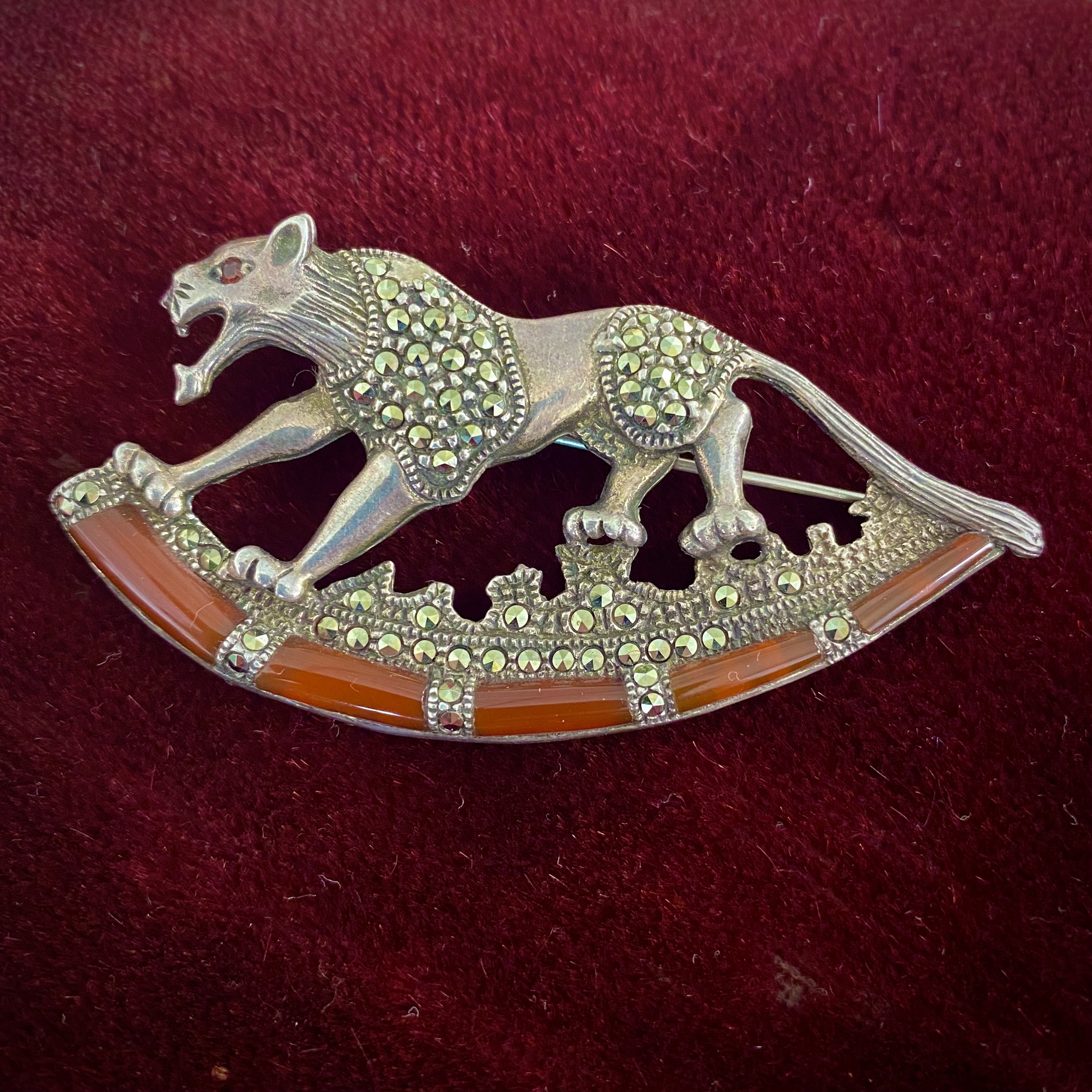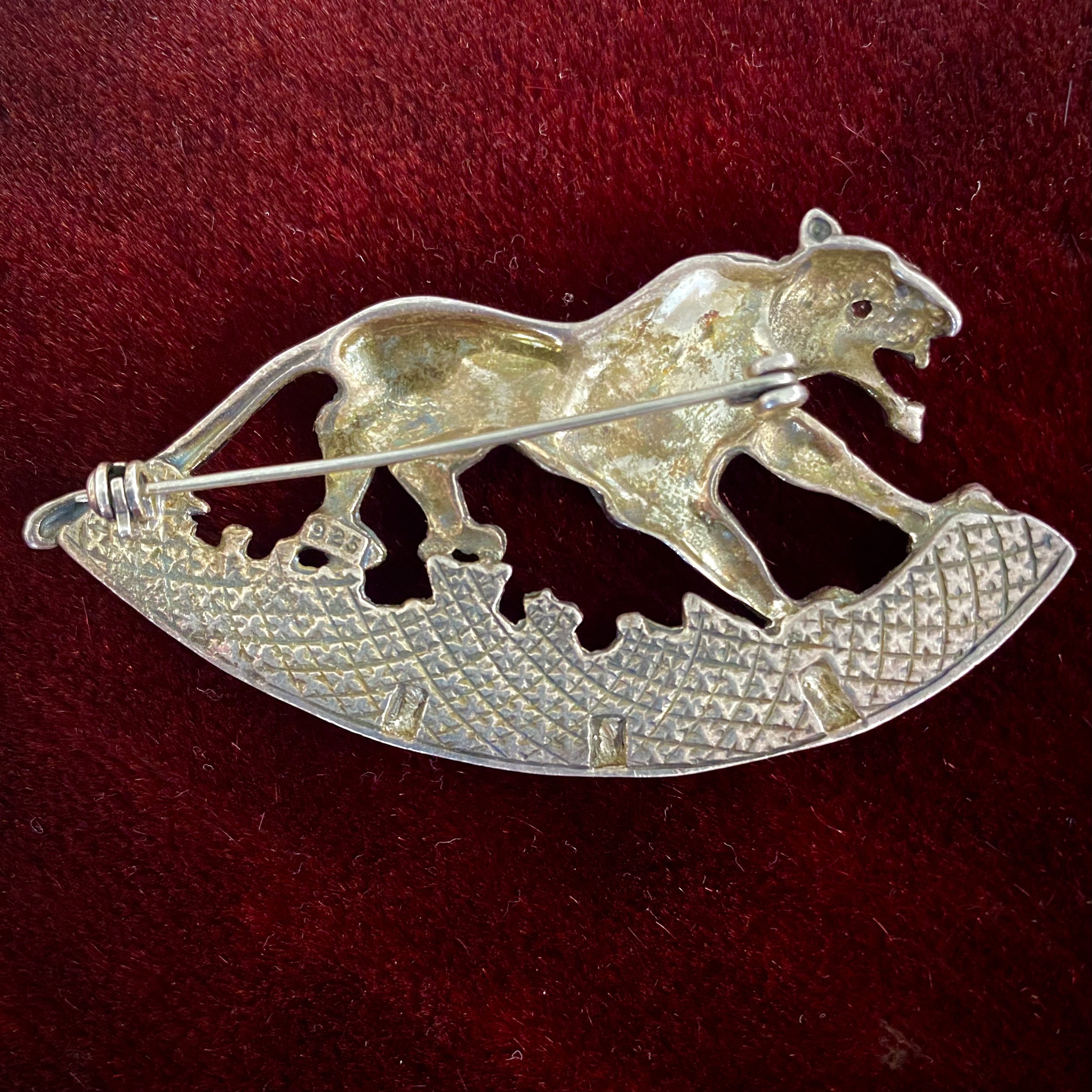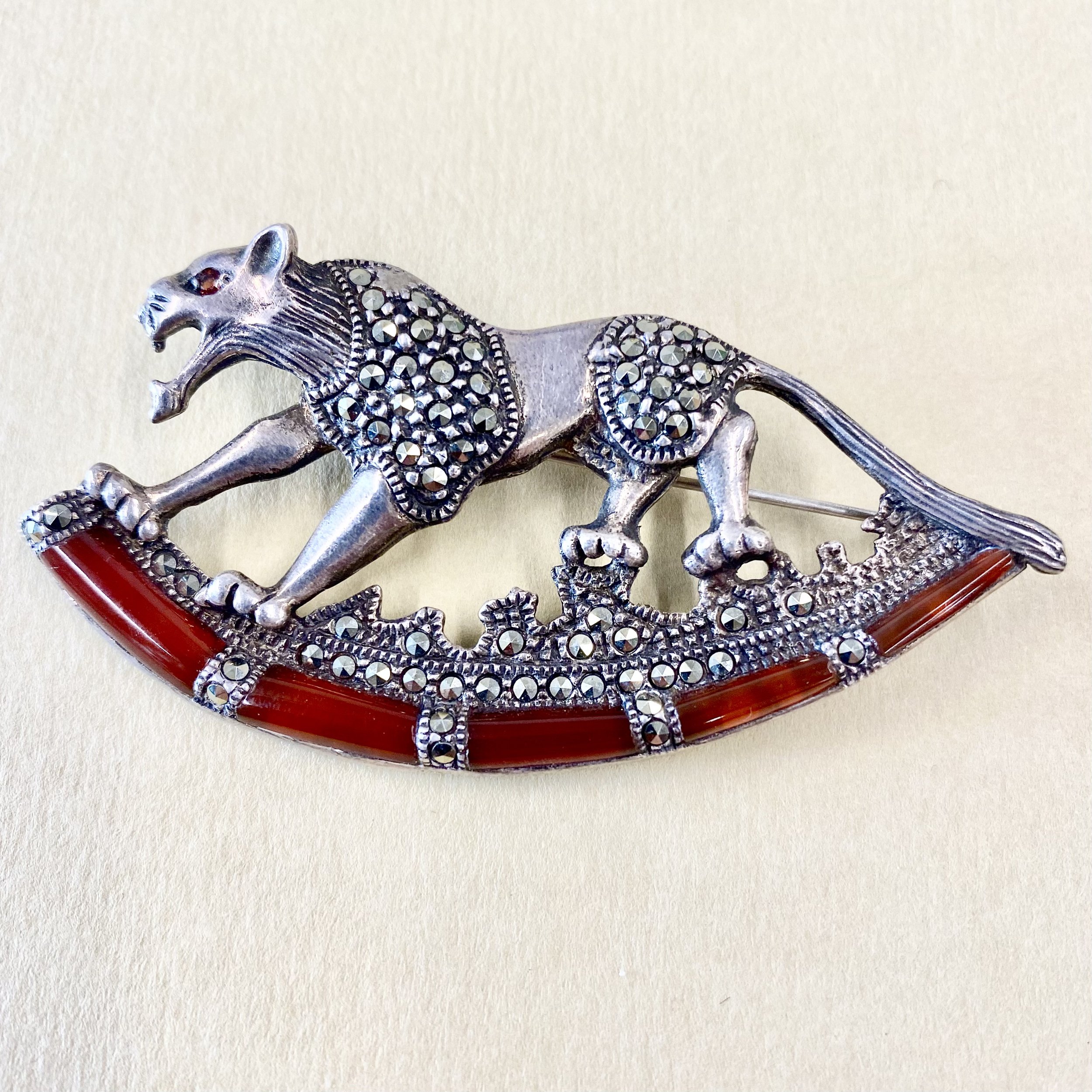Victorian Lion Brooch
Wonderful Victorian-era brooch, featuring a “lion statant" (the heraldic term for a lion depicted standing, with all four feet on the ground). Silver, with inset faceted marcasite, and rectangular carnelian cabochons of graduated size. Marked “925” (Sterling), indicating a date of manufacture later than 1870.
The lion is depicted in the stylized manner of high medieval European heraldry, which has an interesting history. Since few people in Europe had actually seen a lion, depictions of the “king of beasts” were based on stories, and older artistic conventions. The sinuous lines are derived from Viking art, in turn derived from the Celtic La Tène style, and the art of Scythian nomads of the Eurasian steppe. Lions in these earlier cultures were probably adopted as totemic figures and clan symbols. Then, as now, the lion represents courage, strength, and nobility.
As early as the 5th century CE, the lion began to take on Christian symbolism in European art. The Lion of Judah is an ancient symbol of Israel, and of Jerusalem in particular. This originates in the story of Jacob, who blessed his son Judah as "Young Lion" (Genesis 49:9). In the New Testament (Revelation 5:5), the Lion of Judah is re-cast as Jesus of Nazareth (who nonetheless remains the Lamb of God). The lion is also one of the four beasts of the Tetramorph, an early Christian concept in which a man, a lion, an ox (or calf), and an eagle each represent one of the four gospels of the Evangelists, and thus the varied aspects of Jesus Christ. The association of animal with Evangelist varied during the early Christian period, but by medieval times it was pretty much settled that Mark was the lion — roaring in the desert with prophetic power.


